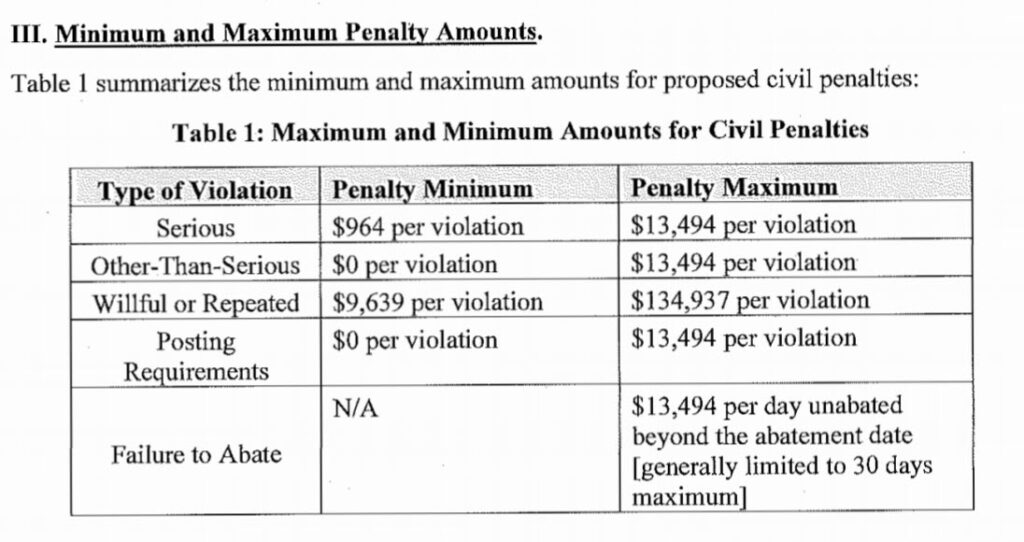The whole country is facing a very difficult situation right now as we all deal with both the COVID-19 disease and the effects of government’s response to it. Some customers (especially restaurant service) are seeing a 2/3rds drop in their business. Other sectors, such as Grocery, are seeing unprecedented demand. Either way, that’s a recipe for chaos.
One of the first cultural victims of chaos is usually the safety / regulatory community. We’re easy to ignore whether the reason is “we’re facing layoffs and bankruptcy” or “orders are up 300% and we don’t have time for this.”
On top of that, in a good-faith effort to re-assure the regulated community that they understand the burdens we’re under right now, the EPA drafted a policy saying they would use discretion on compliance during the pandemic.
That EPA policy was interpreted by some (the environmental lobby mostly) as a blanket waiver of all regulations allowing the regulated community to pollute at will. More significantly worrying to me personally was the calls, emails & texts I started getting Friday where people in our refrigeration community were being “told” this temporary EPA policy was being used to avoid compliance with their PSM / RMP obligations.
With that in mind, let’s look at what it actually says, shall we?
What is the EPA actually saying?
Here’s the actual EPA press release. Here’s the actual EPA guidance memorandum. Here’s the important part:
- Entities should make every effort to comply with their environmental compliance obligations.
- If compliance is not reasonably practicable, facilities with environmental compliance obligations should:
- Act responsibly under the circumstances in order to minimize the effects and duration of any noncompliance caused by COVID-19;
- Identify the specific nature and dates of the noncompliance;
- Identify how COVID-19 was the cause of the noncompliance, and the decisions and actions taken in response, including best efforts to comply and steps taken to come into compliance at the earliest opportunity;
- Return to compliance as soon as possible; and
- Document the information, action, or condition specified in a. through d
The consequences of the pandemic may constrain the ability of regulated entities to perform routine compliance monitoring, integrity testing, sampling, laboratory analysis, training, and reporting or certification. … In general, the EPA does not expect to seek penalties for violations of routine compliance monitoring, integrity testing, sampling, laboratory analysis, training, and reporting or certification obligations in situations where the EPA agrees that COVID-19 was the cause of the noncompliance and the entity provides supporting documentation to the EPA upon request.
What does that mean for us in PSM/RMP covered processes?
Short answer: Not a lot. Long answer follows…
Here’s some examples of what it might let you avoid a fine for:
- Getting an annual compressor vibration analysis a few weeks late because all your contractor’s technicians were ill due to COVID-19
- Performing a routine MI inspection late because your technicians were ill due to COVID-19.
- Delaying some training, a compliance audit, PHA revalidation, etc. because of COVID-19 related travel restrictions.
Here’s some examples of what it definitely WILL NOT let you avoid a fine for:
- Starting up equipment without a proper Pre-Startup Safety Review. (If you have time to start it, you have time to check it)
- Making changes without implementing your written Management of Change policy. (If you have time to change it, you have time to do so safely)
- Addressing existing recommendations and known problems.
- If your SOPs have been out of compliance since IIAR 7 was published in 2013, this memo is NOT going to help you avoid fines because COVID-19 doesn’t explain the delay.
- If your PHA hasn’t been updated to reflect the 2012 IIAR Compliance guidance, this memo is NOT going to help you avoid fines because COVID-19 doesn’t explain the delay.
- If you haven’t provided documentation that your Operators and/or Contractors are properly trained, this memo is NOT going to help you avoid fines because COVID-19 doesn’t explain the delay.
- If you have rusted pipes, and have for several years, but you still haven’t gotten around to dealing with them, this memo is NOT going to help you avoid fines because COVID-19 doesn’t explain the delay.
- Delaying, or failing to report a release of ammonia. It does not affect the requirements to REPORT releases.
Accidental Releases: Nothing in this temporary policy relieves any entity from the responsibility to prevent, respond to, or report accidental releases of oil, hazardous substances, hazardous chemicals, hazardous waste, and other pollutants, as required by federal law, or should be read as a willingness to exercise enforcement discretion in the wake of such a release.
Closing thoughts
Unless you are in a very unique position, this EPA memo means very little to you at all. Here’s examples of two clients that it does affect:
- Scheduled 5yr MI delayed: The client has delayed their scheduled 5yr MI inspection & audit because of travel restrictions in their state. Their intent is to schedule it as soon as it is reasonably safe to do so once this pandemic has passed. If they document how COVID-19 caused this delay, this memo helps them feel confident that the EPA understands the issue.
- Compliance Audits delayed: The client still has until June to meet their 3yr date but had to delay their scheduled March compliance audits due to travel restrictions. Assuming the issue has passed, and they can reschedule before they hit their June requirement, they have no issue at all. If the issue continues such that they will not be able to complete their 3yr compliance audits before the deadline this EPA policy helps them if:
- The audit activities that can be done remotely are done before the 3yr date, and
- The audit activities that cannot be done remotely are done as soon as reasonably possible after the pandemic has passed. They will also need to document how COVID-19 caused this delay.
